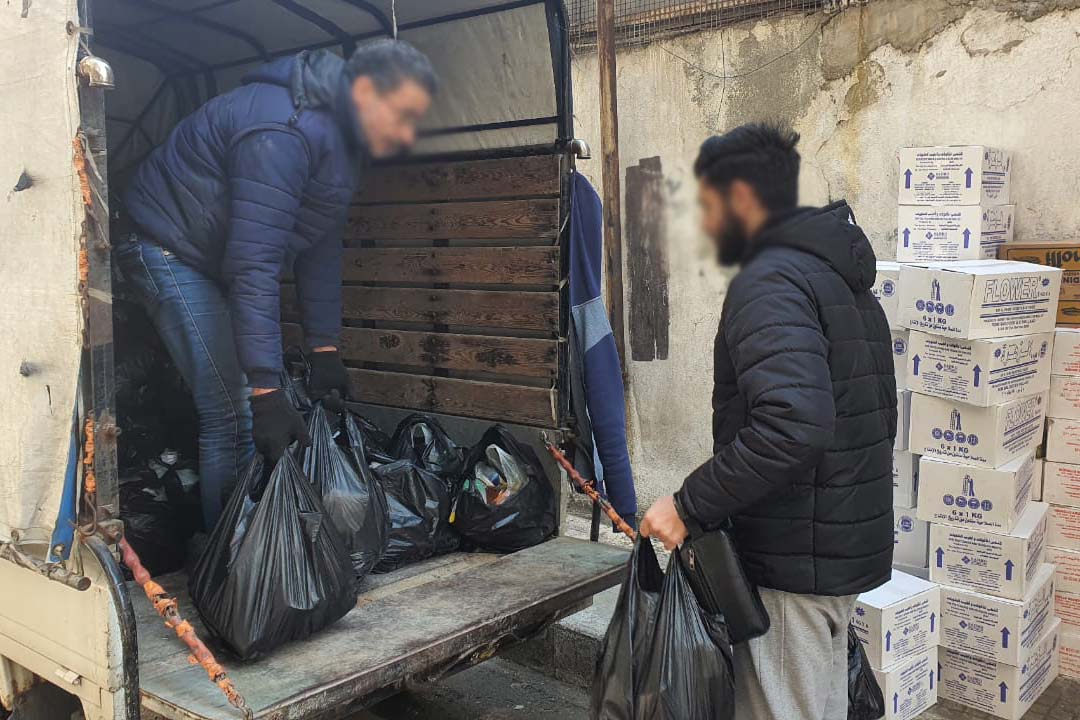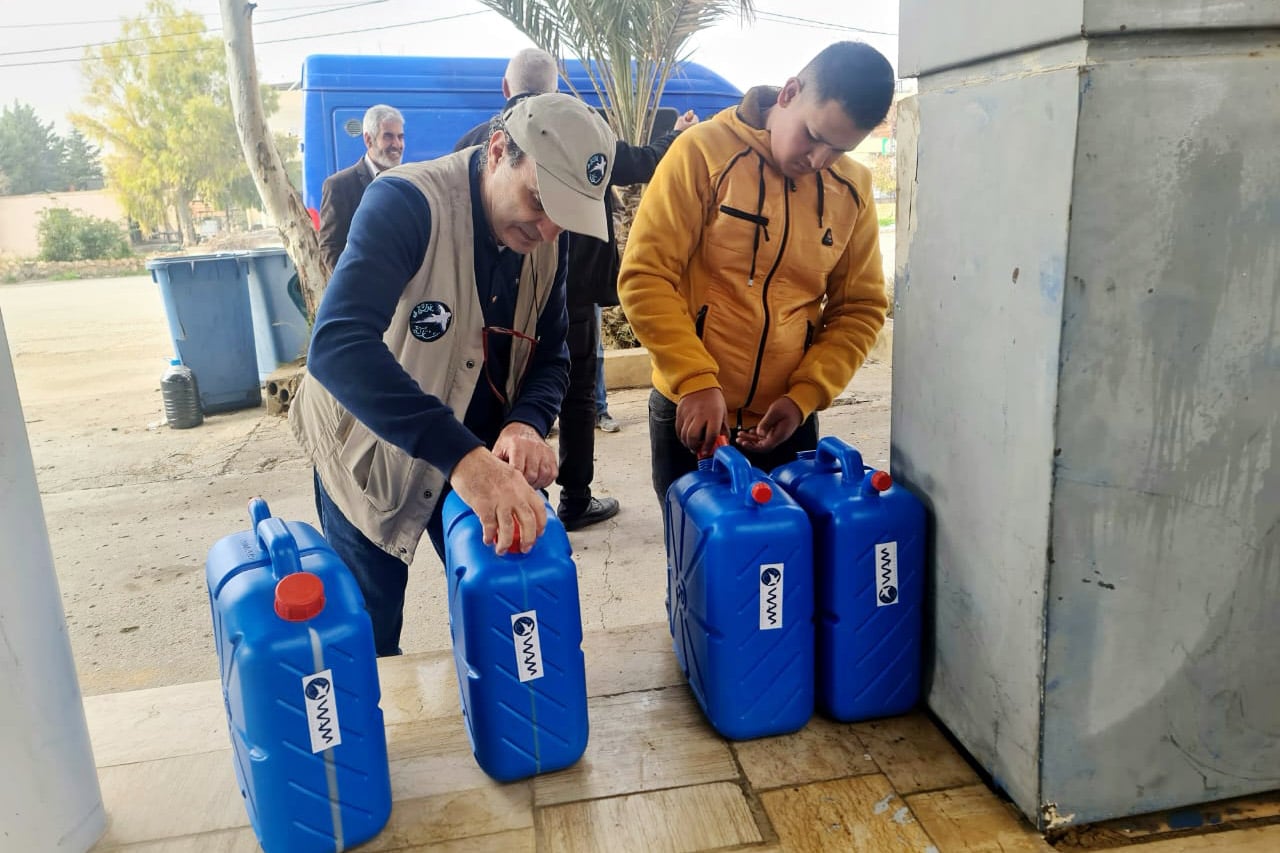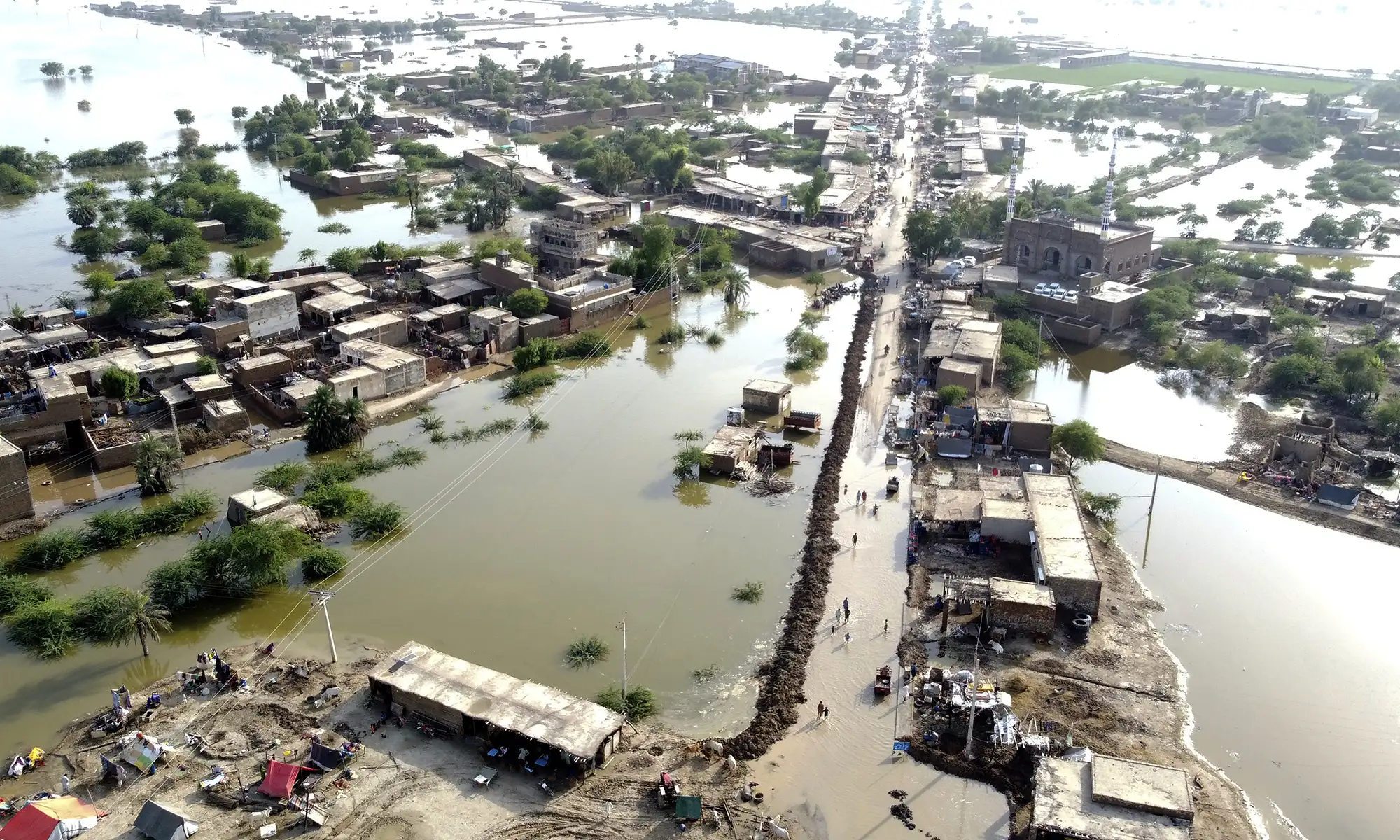
February 10, 2022 | 2:05 p.m.
Typhoon Rai, known in the Philippines as Typhoon Odette, roared ashore on Sunday, December 12, 2021. Months later, coastal areas are still reeling from the damage.
“In the province of Bohol, almost 100% [of people] were affected,” said Hermes Angoy with the Bohol Council Boy Scouts of the Philippines. “It is one of the strongest typhoons ever to hit our eastern municipalities from Ubay down to Inabangga and Tubigon, and the interior towns.”
The storm displaced more than 481,000 people according to the Philippines Disaster Risk Reduction and Management Council. Nearly 400 people lost their lives as a result of the powerful storm. The true scale of destruction still remains somewhat unknown, because reaching the hardest-hit areas is tough for rescue workers. Seemingly nothing remained untouched.
But because of generous donors, Convoy of Hope has equipped Hermes and his team to help give out nearly 319,000 meals.
“The storm was so strong, a lot of people lost their houses and are staying in evacuation centers,” said Hermes, who has been working around the clock to serve others. “We are thankful for the efforts of Convoy of Hope in giving us assistance. This bag of food will help our townspeople and satisfy their hunger even for a short while, especially after the effects of Odette.”
Eusie Sarabia, also with the Bohol Council Boy Scouts of the Philippines, said, “I am so thankful to Convoy of Hope for choosing to partner with us for the relief operations. It is a big help to our community and other Boholanios who were affected by Typhoon Odette. Last Tuesday, we packed relief goods at Holy Name University. While we packed supplies, I kept thinking that this will really benefit our countrymen and that those who’ll receive it won’t have to worry about food.”
Convoy of Hope continues to meet the need. Thank you for making it possible.
January 28, 2022 | 9:35 a.m.
More than a month after Super Typhoon Rai devastated the Philippines, Convoy of Hope continues to provide emergency relief to those still struggling to recover.
Rai barreled through 11 out of the Philippines’ 17 regions, leaving incredible damage behind. Local authorities reported that on some islands, 90% of the structures sustained severe damage.

“It caused massive destruction. It was like a bomb was dropped in northern Bohol,” Anthony Damalerio, chief of Bohol province’s disaster agency, told Reuters.
Many are still without power, shelter, and vital necessities. In these areas, residents rely on generators, good faith from neighbors, and support from organizations like Convoy of Hope.
Through this response, Convoy of Hope has already served more than 24,000 survivors across 23 different communities. With help from 18 different churches, organizations, and operational partners, Convoy has distributed more than 318,000 meals in addition to water and other vital necessities.

As urgent needs persist, Convoy of Hope’s response to Typhoon Rai will continue providing hope and emergency aid to those in affected areas. To support Convoy as this response continues, click here.
January 12, 2022 | 4:10 p.m.
Convoy of Hope’s response to Super Typhoon Rai continues, providing necessities to those in dire need across the disaster zone.
Thankfully, of the 144 Convoy of Hope Children’s Feeding centers in the typhoon’s path, none reported major damage. Unfortunately, the typhoon brought catastrophic destruction in many other areas.
“We have lots of devastation,” said John Williford of Happy Horizons, one of Convoy of Hope’s partners in the Philippines. John stood in a small clearing, surrounded by massive trees that the typhoon had snapped in two. “We have food here on campus, but only for the next couple of days.”
Requests for help are still pouring in from affected areas. Convoy has received thousands and is leveraging delivery options by land and sea to quickly get food, water, and other vital relief supplies to those who need them most.
“Thank you so much! We’re so happy!” said Pastor Cayerol Flores, one of Convoy of Hope’s partners in the Philippines. She shouted over the sound of volunteers preparing relief supplies for distribution to other survivors across the island nation.
“Thank you, Convoy of Hope!” other volunteers said as they walked around waist-high piles of groceries.
Thousands of typhoon survivors are still without access to clean water, food, shelter, or electricity. The National Grid Corporation of the Philippines reported on this issue in their latest update. “As of today, NGCP has restored 765 out of 917 damaged transmission poles, and 88 of 95 transmission lines in all affected areas.”
Still, many across the Philippines anticipate that power outages in their area may last several more weeks. In areas like Bohol, less than 25% of the power grid is functional.
Convoy of Hope will continue meeting the needs of those struggling to rebuild after Super Typhoon Rai. To contribute to this response as Convoy provides necessities to survivors in desperate need, click here.
December 30, 2021 | 5 p.m.
The death toll from Super Typhoon Rai (also known as Typhoon Odette) has surged to 375. Survivors are desperate for supplies like drinking water and food. Convoy of Hope is responding, despite looming challenges.
Jay Lacia and his child used to celebrate Christmas every year. Because of the storm, this year was different.
“We always celebrated Christmas, but for now, it’s too hard,” Jay told CNN. “Everything was gone, including my house. The roof, and any wood that we built with, was gone.”
Images from across the Philippines showed drenched piles of rubble, flattened groves of trees, and concrete power poles blocking roads after the wind snapped them in two.
According to the Philippines Disaster Risk Reduction and Management Council, the storm had displaced 481,000 individuals by the time it made its exit on Saturday. Authorities do not anticipate that power will be fully restored across the disaster zone until February 2022.
There were 144 Convoy of Hope Children’s Feeding centers in Rai’s path.
Some regions reported that Super Typhoon Rai was the strongest they had ever seen. Meteorologists confirmed that it was the strongest of fifteen weather disturbances to strike the Philippines this year.
Convoy of Hope is hard at work navigating the complexities of this storm’s aftermath in order to provide hope and vital relief supplies to survivors.

Supply chain concerns across the globe have delayed shipping timelines; however, Convoy of Hope’s staff and partners in the Philippines provide the opportunity for in-country purchase of resources close to affected areas, fast-forwarding response times exponentially. Infrastructure damage from the storm threatened to further impede shipping and delivery. But Convoy’s Disaster Services team and its partners stay ready to pivot strategically in order to get supplies into the hands of survivors as quickly as possible.
Convoy of Hope will continue to provide emergency relief for those affected. To be a part of this response, click here.
December 21, 2021 | 11:30 a.m.
On December 15, Super Typhoon Rai — also known as Typhoon Odette — hit the Philippines with wind gusts of up to 168 mph. Convoy of Hope is responding as information and needs become more clear.
The death toll from Super Typhoon Rai in Bohol province is currently 96 people. Governor Arlene Bag-ao said on Facebook that the island of Dinagat has been “leveled to the ground” by the storm. “We have a dwindling supply of food and water. Electricity and telecommunications are down.”
The storm was the fifteenth major weather disturbance to hit the Philippines in 2021. It was classified as a super typhoon, with sustained winds of 120 mph near the storm’s eye.
More than 300,000 people evacuated ahead of the storm’s landfall. Millions more were still affected. According to the National Disaster Risk Reduction and Management Council, more than 10,000 villages were in the typhoon’s path. Super Typhoon Rai ravaged the southern and central regions of the archipelago. It knocked out communications and electricity in many areas, ripped off roofs, and toppled concrete power poles.
More details about Convoy of Hope’s response will be added here as they become available.











